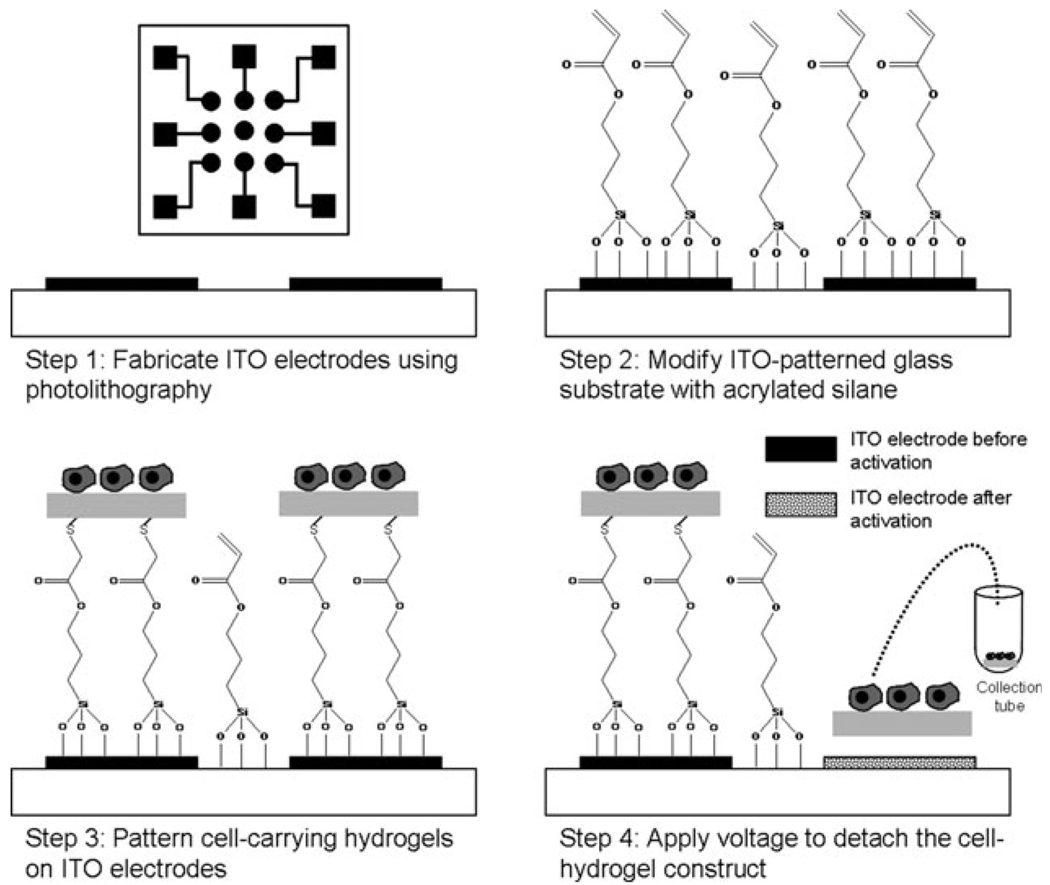Fig. 1.
Selective electrochemical detachment of cell-carrying hydrogels. Step 1: individually addressable ITO electrodes are fabricated on glass using photoresist lithography and wet etching. Inset shows the layout of an array of nine electrodes ITO with leads and contact pads. Step 2: ITO-glass substrates were modified with acrylated silane. Step 3: heparin-based hydrogels and cells were patterned on top of ITO electrodes using a PDMS stencil. Vinyl groups of the silane layer reacted with thiolated heparin by Michael addition, covalently linking heparin gel to the ITO surface. Step 4: applying reductive potential (−1.8 V vs. Ag/AgCl reference for 60 s) to the desired electrode leads to desorption of the underlying silane layer as well as a cell-carrying hydrogel construct.

